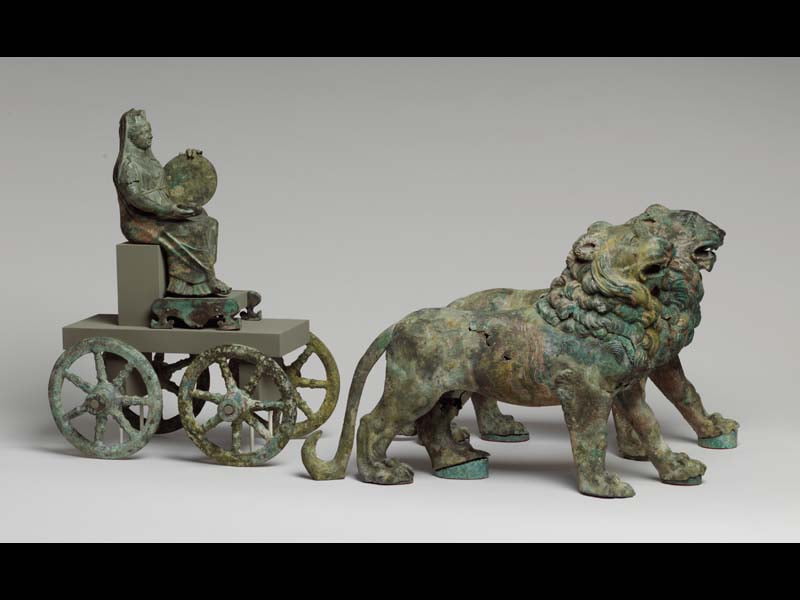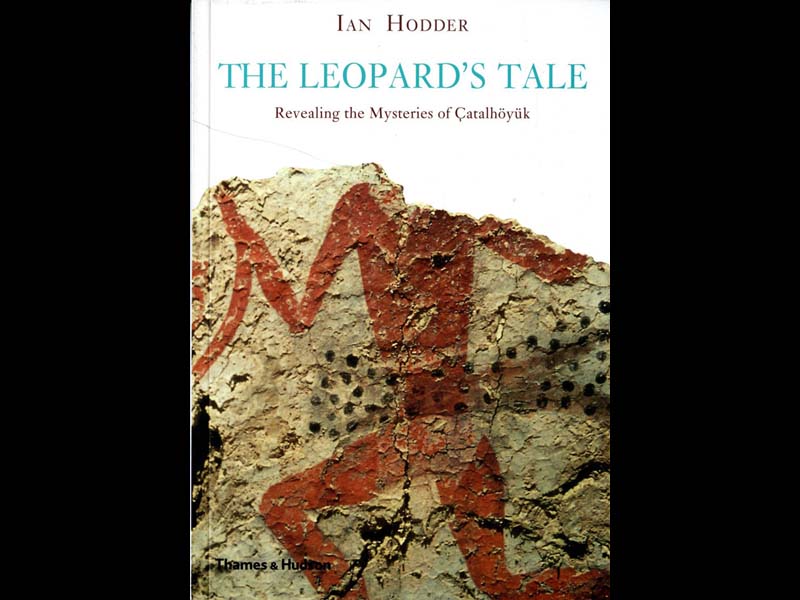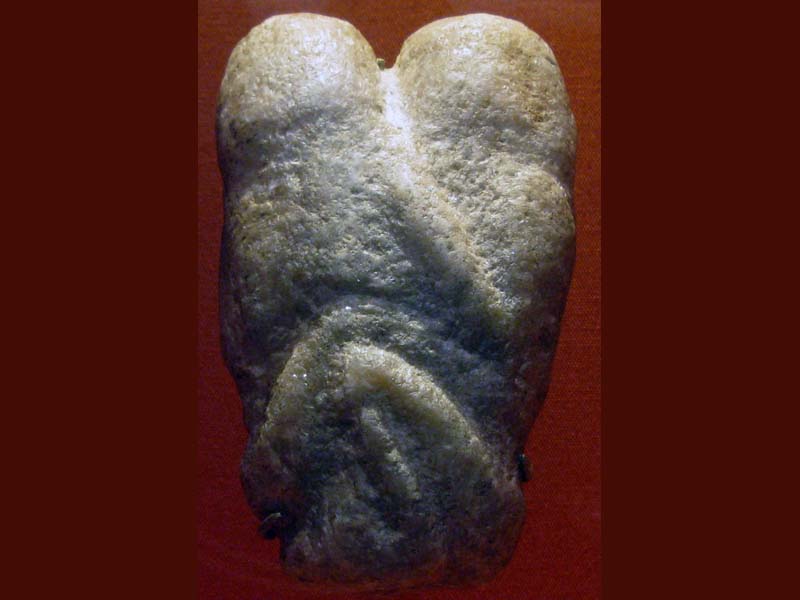di Arianna Carta
That Marija Gimbutas was a genius and that she revolutionized Neolithic archeology is a fact that clearly emerges from her university career, publications and international excavation management at a time when women archaeologists had to remain closed in their small rooms. Little known outside academic circles, however, is the demonization of which she has been the object, especially in the sphere from which she came, the archaeological one. In this document, extracted from a recently published article of mine, we will try to understand the reasons.
The discourse on protohistoric female deities it has distant roots and has been theorized in various fields by numerous scholars, with a predominance of historians of religions: Bachofen, Frazer, EO James, Graves, Russel, Neumman, Campbell, among others.
In the archaeological field, up to the first half of the 900s and beyond, at an international level there was an implicit agreement on the cult of the Mother Goddess in which the Paleolithic and Neolithic statuettes were considered the material proof of this divinity. The most common interpretation was that which linked the female divinity to the cult of fertility, which was expressed in the emphasis given to the breasts and vulva of the statuettes. This interpretation reached its zenith with the discoveries in James's excavations Mellaart at the neolithic site of Catalhoyuk in Anatolia. During the excavations, dozens of bas-reliefs depicting women "in the act of giving birth" appeared under the eyes of the archaeologist. Among the many artifacts found, there is what later became the emblem of the archaeological site, the famous statue of a woman seated on a throne with two leopards.

According to Mellaart on the site once stood a city consecrated to the worship of the mother goddess. A few years later, the archaeologist Marija Gimbutas not only confirmed her hypotheses, but conducted a multidisciplinary study on female statuettes and related symbols, stating that in "Old Europe" during the Neolithic many Goddesses were venerated ( or a single Great Goddess who came in various forms). Her theories have generated strong academic reactions both for and against, especially in the archaeological field. To explain the reasons for these heated positions, it is necessary to expose the controversial issues that intersect the discourse of female deities in the archaeological field, their relationship with female statuettes and the link with the "power" of women.
After Mellaart another archaeologist, Ian hodder, considered the father of post-process archeology, took over the excavations of Catalhoyuk and over the course of 20 years of further excavation and analysis, he realized that not only were women represented in the buildings at the site but also many animals, especially felines and bulls/cows. Strengthened by this discovery, overturning the previous interpretations, he published an essay entitled, The Leopard's Tale: Revealing the Mysteries of Catalhoyuk (2006), whose focus is on animals instead of the divine aspects of the feminine.
The same archaeologist, while denying the strong presence of female symbols, insists that "we can speak of violence, sex and death in the imagination of Çatalhöyük simply in terms of male prowess", an argument that curiously follows the one elaborated by Peter Ucko (1962 ), in which the scholar lamented that “male statuettes are repudiated because they depict the prowess of male deities.”
Michael too Balter (2016) in his essay The Goddess and the Bull, also dedicated to the disputed archaeological site, says Gimbutas suffers from “nostalgia for an egalitarian paradise lost where women were empowered rather than trampled upon.” Text which, not so implicitly, assumes that the female gender not only come constantly trampled ed humiliated but also that a society where women can have weight and a social role is unimaginable, or rather, that it can only belong to the realm of the imagination.
Meanwhile, the archaeologists were trying to assert themselves, after decades of subordinate positions within the academy, and focused attention on the role of women in the eras examined. As the archaeologist pointed out Joan GeroIndeed, it was expected that female archaeologists could only work in closed places such as laboratories or museums where the materials/artifacts adventurously found by their male counterparts were catalogued. In this regard, Gero coined the term "women-at-home archaeologists” and, indeed, the direction of international excavations entrusted to Marija Gimbutas, is to be considered exceptional in its rarity…
And if you think that these are issues attributable to the past, even if recent, an essay was published in 2020 that reminds us that even today there is a need to reiterate the role of women in prehistory. The French paletnologist Marylene Patou-Mathis, director of the CNRS (National Center for Scientific Research), writes an essay with a provocative but significant title: L'homme prehistorique est aussi une femme: Une histoire de l'invisibilité des femmes (translated into Italian with the title: Prehistory is female. A story of the invisibility of women) which reveals and denounces the androcentric setting of archeology, demonstrating through various examples how the interpretations of prehistoric finds are still centered on the idea that men are the authors of the main inventions as well as the proponents of the technological advance that brought civilization , while women seem to occupy secondary, subordinate and low-prestige positions.
The complaints against sexism, misogyny and gender stereotypes carried out by feminist (archaeologists) are numerous. The American archaeologist Bettina Arnold, for example, has repeatedly denounced the androcentrism of the archaeological establishment, stating that interpretations of women in positions of power in prehistory fall within a range that goes from a "benevolent disinterest" to an "active sabotage" especially when it comes to of very rich burials [and therefore particularly significant in terms of power].
Gender studies and archaeology: “add gender and stir”?
Meanwhile, a brief clarification on the terms sex and gender: while sex refers to the genitals with which a person is born, gender refers to the socially constructed identity of male and female.
While the archaeological feminist current until the 70s-80s was mainly interested in revealing the androcentrism of the discipline by assuming the categories "woman" and "man" without questioning them, most of the men and women scholars who adhered to the theories of genre, absorbed by post-process archeology, put the emphasis on the cultural construction of identities considered fluid, with unclear outlines and above all, culturally and socially determined. On the one hand we are therefore witnessing the clash between feminist academics who accuse of essentialism the setting of archaeologists such as Gimbutas, for example, or in general of all the scholars who deal with the socio-economic roles, status and cults concerning women in prehistory, on the other we have a series of archaeologists who, adhering to the gender interpretation that has established in post-processualism, often use a procedure known as “add gender and stir”, translatable as: “add gender and mix” which describes the rather common practice in the archaeological field of using the gender approach in a false way and without an adequate methodological reference, simply because it responds to an academic trend that is impossible to avoid …
Marija Gimbutas: Anatomy of a Murder (Academic)
In the archaeological debate, the figure of Gimbutas is emblematic precisely because he found himself at the center of a double academic conflict. On the one hand, she was one of the first female archaeologists to lead important excavations, occupying a position of great importance in a university world dominated by male figures. In addition to this, although she has never joined the feminist movement, she has found herself enmeshed in the disputes between feminist archaeologists and those of gender archeology, who have bitterly contested her gender essentialism, (see Conkey and Tringham 1995; Eller 2000; Navickaitė 2019) at a time when feminist theories and Gender Studies have converged within the postmodern archaeological academic debate, as already mentioned.
For example, if you read the essay: A Companion to Gender Archaeology (2012), not only are Gimbutas' studies harshly criticized (see the contribution by Goodison and Morris), but also when explicitly dealing with gender and power in prehistory, the concepts of "ambiguity, contradiction, diversity" (Hutson, Hanks and Pyburn) up to Benjamin Alberti's "queer prehistory" (2012).
Gimbutas was the first (and remains one of the few archaeologists) who, although not belonging to the feminist movement, attempted (in my opinion with success) to re-read, re-analyse a large part of the archaeological material culture pertaining to "Old Europe", above all statuary and pottery, but not only, to find "patterns that connect", analogies, symbolic and cultural ties... and what she has found are thousands of archetypes semantically connectable to the feminine that she has declined as attributes of the Goddess.
Another great merit of Marija Gimbutas was that of having disclosed studies that normally belong only to insiders, to a vast public, including non-academic ones, so much so that the British anthropologist Joseph Campbell (1989), in the introduction to the essay The Language of the Goddess he compares Gimbutas' academic work to deciphering the Rosetta Stone which made it possible to understand hieroglyphics.
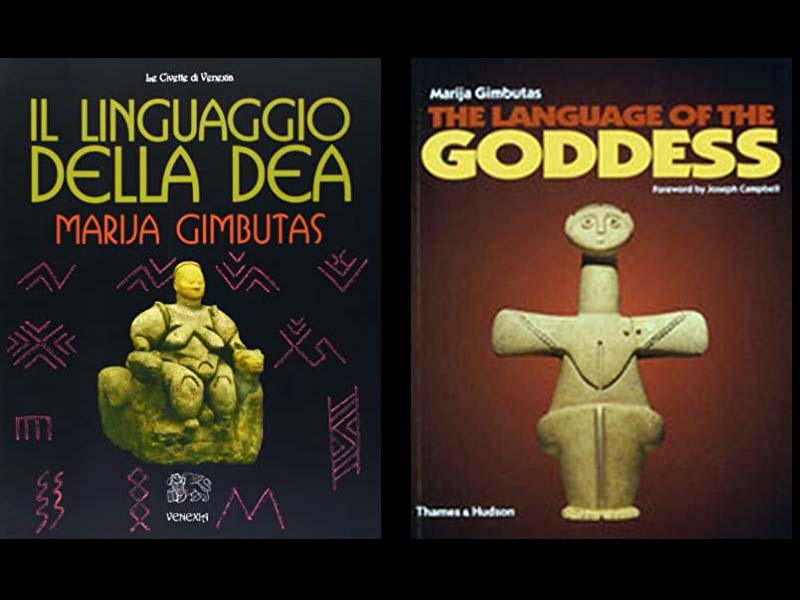
Also, attempting to Gimbutas to analyze more than 2000 symbols, attributable to the cult of the female divinity, represents a unicum in an archaeological field that does not accept collaborations with humanistic disciplines, apparently aimed not to go beyond the safe limits of the excavation context. This happened also thanks to her linguistic knowledge which allowed her access to the results of excavations from the whole area of central Europe which had never been translated and therefore unknown on an international level. In this regard, even a scholar against her, such as Cynthia Eller (2000), admits "her extraordinary linguistic knowledge" and her "encyclopaedic knowledge of the archaeological sites of Central and Eastern Europe which has allowed her to produce concrete hypotheses on such far-reaching questions."
On the other hand, I would like to highlight his truly multidisciplinary approach which made use of the knowledge of linguistics, mythology and folklore, symbolism, archeology and anthropology, also the result of his doctoral studies in prehistoric archaeology, history of religions and ethnology carried out at the University of Tubigen in 1946. His academic career, which developed at Harvard and UCLA Universities in the United States, includes the direction of international excavations, 20 academic papers and more than 200 scientific articles translated into several languages, far more than the most archaeologists, or academics in general, can aspire. And yet, even today, mentioning Gimbutas in the archaeological field arouses strong suspicions and hostile reactions.
Arguments Against Gimbutas: From Menopausal Syndrome to Political Trauma.
Leaving aside the value and scope of his studies of which many scholars have written, I would now like to highlight the arguments used in the archaeological academic field to refute Gimbutas' hypotheses.
As mentioned above, in the post-trial context, even archaeologists who define themselves as feminists use arguments that are decidedly un-academic in both tone and content when referring to her work. Here is a short selection:
English archaeologists Goodison e Morris (2013), write that Gimbutas' work is comparable to a fairy tale into which humanity would be plunged fromEden of the Neolithic to a macho world that would have "ruined their party"! In general, archaeologists criticize the cult of the Mother Goddess, promoting none other than Ian Hodder as the great 'destroyer of Goddess theories'!
According to the scholars, the main argument that would demonstrate Gimbutas' bad faith is the fact that he did not mention the statuette of the "Ain Sakhri lovers”, for fear of disproving his theories. Impressed by the significance of this statement, I went to seek information on this find so important and controversial as to overturn the theories on the existence of female divinities. This is a stone statuette from 9000 BC showing a couple probably in the process of sexual intercourse.
How this intercourse would overturn Gimbutas' theories is difficult for me to understand. My academic perplexity increases with the progress of the article which mentions the unbecoming behavior of the followers of the Goddess in Çatalhöyük who have commercialized the image of the Goddess through a straw! I stop here for reasons of (academic) decency: the inconsistency and bad faith of the arguments is quite evident. In the first case, she is accused of not having included in her works one statuette out of the hundreds analysed, for fear that she would have contradicted theories in which only and exclusively female examples exist. In reality, Gimbutas (2005), dealing with the topic of "sacred wedding”, analyzes precisely the statuette which, according to her, “represents the union of man and woman.” Sic et simpliciter.
In the second case the methodological plans are mixed with an enviable nonchalance: using as an academic argument a group of women who produce straws with the image of a statue is at least bizarre, as much as putting animals in the foreground rather than a woman sitting on a throne, probable "ancestor" of divinities such as the Anatolian Cybele often depicted on a throne pulled by big cats…but evidently the iconographic comparison is not considered a sufficiently valid methodology to be used within the archaeological field.
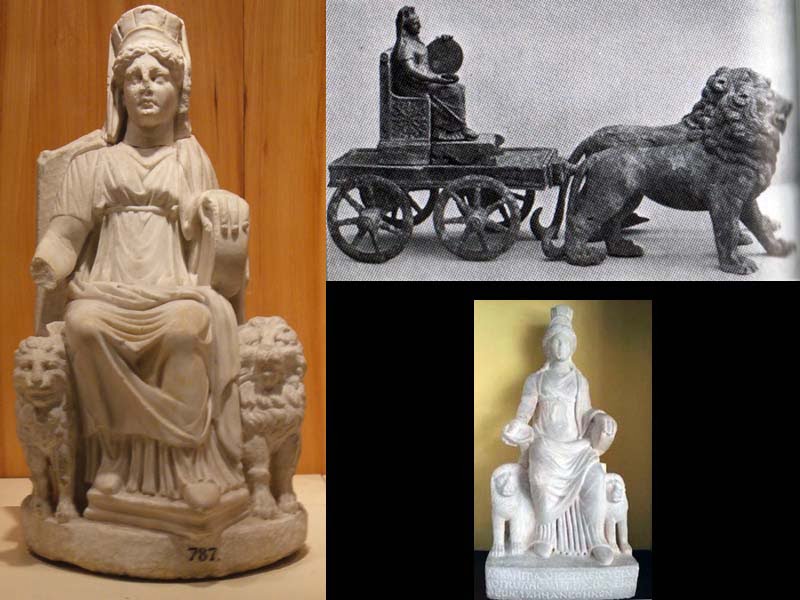
Still in the post-trial sphere, the archaeologists Lynn Meskell e John Chapman they try to discredit Gimbutas not through serious academic debate, discussions of archaeological theories and methodologies, but by exploiting their psychological gifts and showing considerable expertise in the gynecological field.
Lynn Meskell (1995), in an article with the provocative title: “Goddesses, Gimbutas and 'NewAge' archeology”, while acknowledging their academic merits, especially as regards the direction of excavations in south-eastern Europe, states that the theory of warriors Kurgans that invade the peaceful society of Old Europe, derives from the traumatic experience of the Soviet invasion of his native land, while his colleague John Chapman (1998), agreeing on the traumas that would have generated in the "weak mind of Gimbutas an image of warmongering males", finds in menopause the answer to the theories about the Mother Goddess. In your text, after apologizing several times for being forced to deal with "a very delicate question for a male prehistory scholar", you wonder if the fact that Gimbutas insists so much on fertility in his research is due to the fact that she, being in menopause, she had lost it. John Chapman, professor emeritus of prehistoric archeology at Durham University.
Standing next to the professor is her colleague Meskell (1995), self-proclaimed feminist, who criticizes Gimbutas' theories, passing from generic, "pure fantasy" to political accusations: "reverse sexism","gynocentric agenda”/“gynocentric narratives”. Moreover, the archaeologist, considered one of the most important exponents of post-processualism, was part of Ian Hodder's working group at the Çatalhöyük site, evidently supporting its interpretations.
In general, the arguments of the two archaeologists, far from any adherence to theories and methods of any academic discipline, are based on attacks which I do not hesitate to define misogynists. Certainly one of the most well-founded criticisms from a strictly archaeological point of view, expressed by Meskell and taken up by various scholars, is that Gimbutas has elaborated a univocal theory on statuettes that belong to different archaeological contexts, different periods and very distant geographical areas. But if we consider this analysis in a broader perspective, looking up from the single archaeological excavation and observing the incredible analogies between statuettes actually belong to different periods and different contexts, then Gimbutas' theories appear more plausible to us. Certainly fallible, like all hypotheses or theories that are normally denied, remodulated, discussed, etc. For the rest, reading these articles, one gets the impression that these criticisms are based on 'rumors' rather than on a careful reading of the texts. For example, unlike what Meskell writes, Gimbutas does not speak of the "mother Goddess" as of a Goddess who encompasses both the aspects of life and those of death (see Gimbutas 1982), just as he does not speak of matriarchy, which is another of the classic accusations addressed to it, but of “matristic, matrilinear society (Gimbutas, 1991, 2005, 2008). On the other hand, if we take seriously the conclusion of Meskell's (1995) paper which states: “the emphasis on one sex to the exclusion of the other is not only detrimental to gender or feminist studies, it threatens the interpretative integrity of archeology”, and if we invert the genre of his argument, we might ask ourselves how we can rely on male-dominated methodologies and interpretations that continue to characterize a part of archaeological practice and theory. What interpretative integrity can we expect from a discipline that continues to exclude the female sphere from its investigations?
Posterity will judge. For now, I hope that scholars and scholars will continue to read the texts of an archaeologist who had the courage and ability to revolutionize European prehistory through theories which, if they were finally accepted, would radically change a historical narrative that continues to recognize (or worse, discredit) the immense symbolic, social and cultural significance of at least three millennia in which women had a recognized and accepted power in an area at least as large as Europe.
To conclude then, who is afraid of the Goddess? But above all, because we are still willing and willing to accept that such a blatant mystification continues to represent the official narrative transmitted in such a pervasive and constant way as to become a historical truth and therefore the basis of a collective identity that reiterates and justifies unequal treatment , and does not recognize its origins?
Arianna Carta, PhD student in Cultural Anthropology at the University of Primorska in Koper, 2022
For bibliography and complete article (in English) please refer to the link: “Who's Afraid of the Goddess? Leopard's Tale, Menopausal Syndrome: Terms of Debate within Archaeology"

